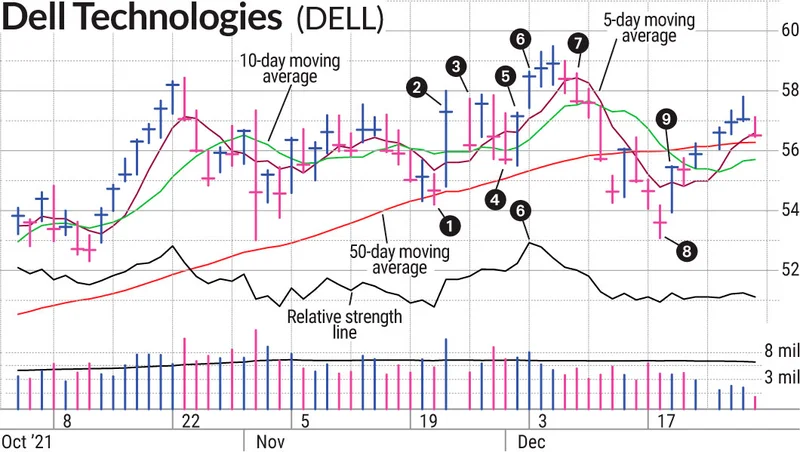Article Directory
When the markets speak, I try to listen. Not for the day-to-day noise, the frantic chirps of traders, but for the moments when the entire system seems to cast a collective vote on the future. This week, we heard one of those votes, loud and clear. Dell’s stock didn’t just climb; it launched. A nearly 8% jump in a single session, with Wall Street’s biggest minds—Wells Fargo, Bernstein, BofA—scrambling to raise their price targets.
But if you think this is just a story about stock tickers and earnings per share, you’re missing the point entirely.
This isn’t a financial report. It’s a construction report. What we’re witnessing is the market finally waking up to a fundamental truth I’ve been talking about for years: the abstract, dreamy, "what if" phase of the AI revolution is over. We are now officially in the tangible, steel-and-silicon, get-your-hands-dirty phase of building our future. And Dell is selling the most important tools for the job.
When I saw the news, I didn’t just see numbers. I saw blueprints turning into buildings. I saw the digital equivalent of concrete being poured for the foundations of a new civilization. This is the kind of breakthrough that reminds me why I got into this field in the first place—the moment an idea becomes an industry.
The Engine Room of Tomorrow
For the past few years, the spotlight has been on the dazzling performers of AI—the large language models that write poetry, the image generators that create art from a sentence. They are incredible, no doubt. But they are the actors on the stage. What Dell is building is the stage itself, the lighting rigs, the sound system, and the power plant for the entire theater.
The company announced it was doubling its long-term earnings growth goal to at least 15% and upping its revenue expectations. Why the sudden, explosive confidence? Look closer. It’s all about their focus on the unglamorous, absolutely essential hardware that makes AI possible. We’re talking about things like private cloud solutions and the new Dell PowerEdge XR8720t server.

This is the critical infrastructure—in simpler terms, it's the specialized plumbing and wiring required for the massive computational demands of artificial intelligence. You can’t run a city-sized AI on your laptop. You need data centers packed with powerful, purpose-built machines that can handle torrents of information. That’s what Dell is building. They’re manufacturing the picks and shovels for the greatest gold rush in human history.
And this tells us something profound. The investment isn't just flowing to the software anymore. It's flowing to the bedrock. What does it signal when the market gets this excited about the hardware? It means the demand is no longer speculative; it's real, it's massive, and it's here to stay.
A New Industrial Revolution, Measured in Megawatts
Let’s reframe those financial targets. A plan to increase dividends by at least 10% annually through 2030 isn’t just a promise to shareholders; it’s a public declaration of such profound confidence in future cash flow that it feels less like a forecast and more like a law of physics. The sheer velocity of this build-out is just staggering—it means the gap between the AI we have today and the AI-integrated world of tomorrow is closing faster than we can even fully comprehend, and companies are racing to lay the tracks before the bullet train leaves the station.
Think about the great infrastructure projects of the past. The transcontinental railroad didn't just make it easier to move people and goods; it stitched a nation together, created new cities out of dust, and unleashed a century of economic growth. The interstate highway system did the same for the 20th century. This AI infrastructure build-out is the 21st-century equivalent. It is the foundational grid upon which everything else will be built—from autonomous logistics and personalized medicine to scientific discoveries we can’t yet imagine.
Imagine you’re a biologist trying to cure a rare disease. Soon, you won’t be limited by the processing power in your lab; you’ll tap into a global network of computational power, running millions of simulations in the time it once took to run one. Imagine you’re a city planner trying to solve traffic congestion. You’ll have an AI co-pilot, running on this powerful new hardware, that can model a city’s entire metabolism in real-time.
This is the world Dell is helping to construct. But with this incredible power comes an equally incredible responsibility. We have to ask ourselves: are we building this new world with wisdom? Are we ensuring this power is distributed equitably, that it serves humanity, and that we build in the guardrails to manage its awesome potential? The tools are being forged; it’s up to us to decide whether we become master craftsmen or careless apprentices.
The Blueprint Is Becoming Real
For so long, the future of AI has felt like a distant, abstract concept—a conversation for academics and futurists. What Dell’s surge represents is the loud, unmistakable thud of that future arriving in the physical world. It's the sound of server racks being installed, of fiber optic cables being laid, of a new industrial engine roaring to life. The market isn’t just betting on a single company’s success. It’s betting on the dawn of a new era, and it’s telling us that the people laying the foundation are about to become very, very busy. The conversation is over. It’s time to build.



